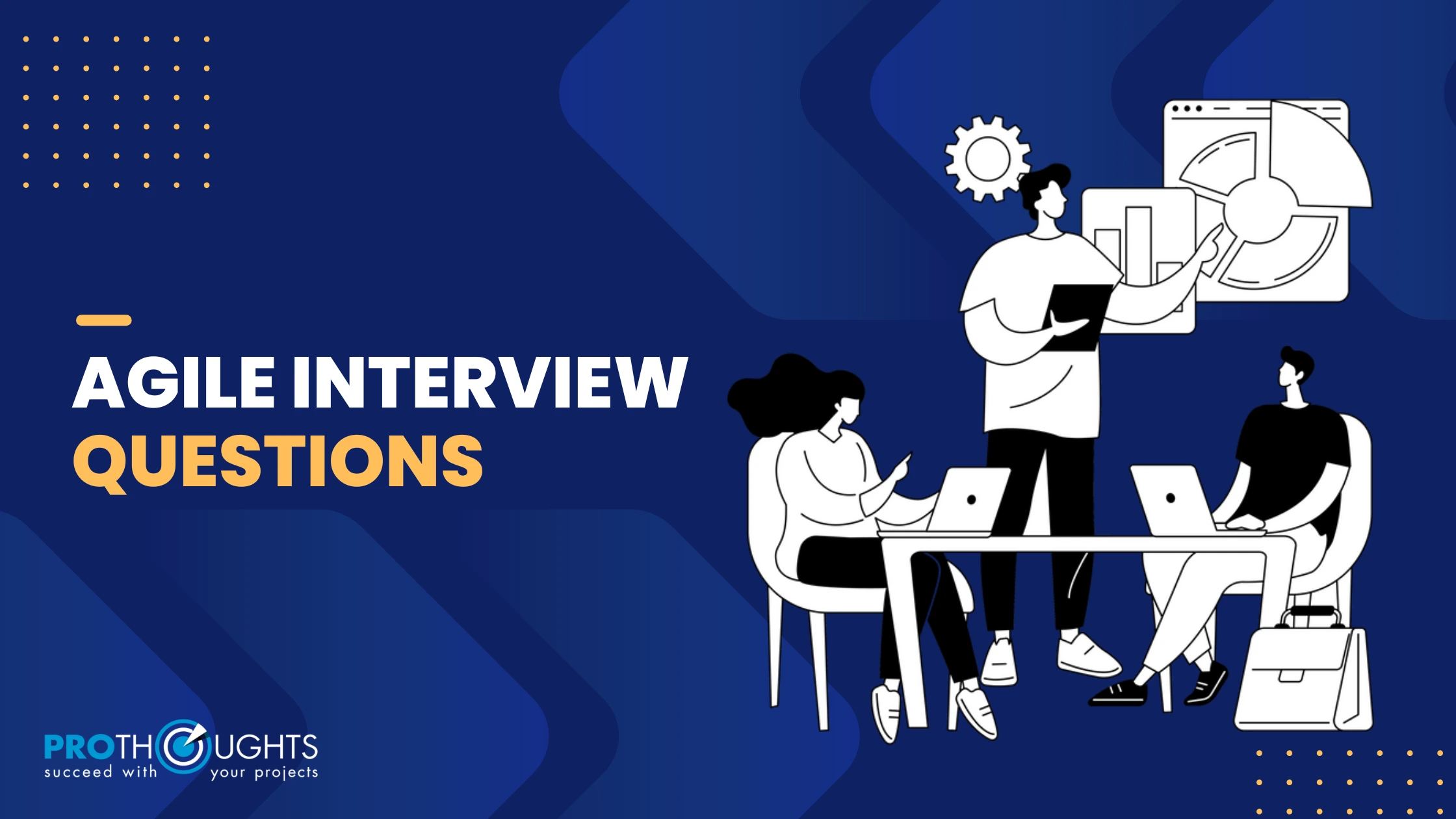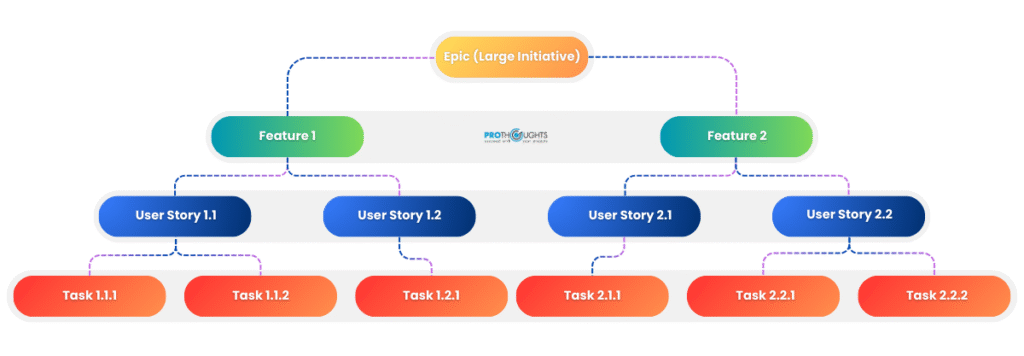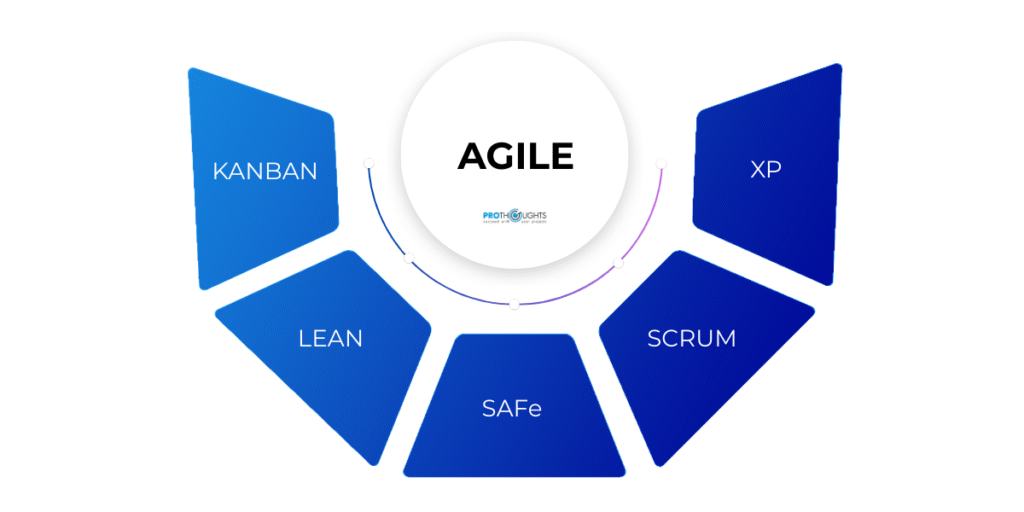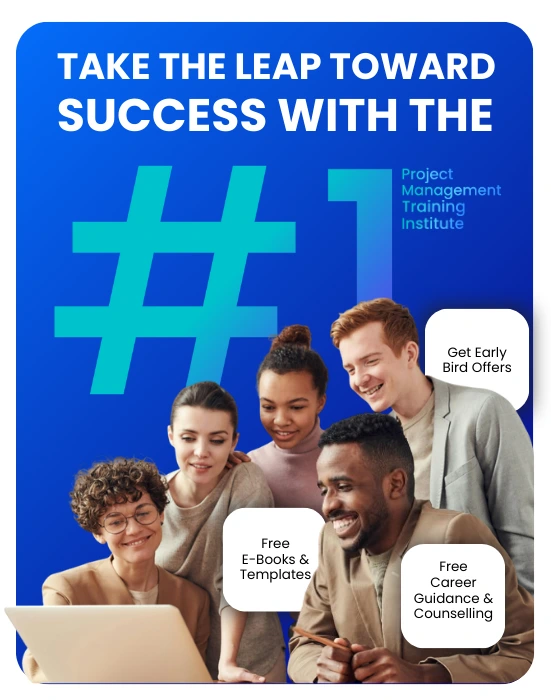Agile is a specialized approach within project management that focuses on flexibility, collaboration, and iterative delivery. While project management covers a broad range of planning, execution, and monitoring practices, Agile specifically helps teams respond quickly to change, deliver value faster, and work closely with stakeholders.
In interviews, employers often test how well candidates use Agile principles in practice. Testers are mainly questioned on collaboration, continuous integration, and iterative delivery, while project managers are asked about guiding teams and ensuring project success.
This blog covers everything you need to prepare for Agile interview questions in 2025. You will learn about basic agile, agile methodology, agile testing, and Agile Project Manager Interview Questions.
Understanding Agile Methodology for Interview Questions
Agile methodology is a way of managing projects, especially in software development, that focuses on flexibility, teamwork, and delivering results quickly. Instead of planning everything at the start (like traditional methods), Agile breaks the work into small, manageable parts called iterations.
In each agile sprint, the team works on a set of tasks, tests them, gets feedback, and improves the product. This way, teams can adapt quickly to changes, fix problems early, and make sure the final product meets what users need.
Key Principles of Agile:
Agile has 12 key principles, but in interviews, it’s often fine to focus on a few that are most relevant to the role you are applying for. Highlighting select principles shows that you understand the core ideas without overwhelming the discussion.
Some important ones include:
- Provide value consistently and early.
- Accepting changes in requirements.
- Collaborate and work with the stakeholders
- Maintaining a balance between simplicity and technical intelligence.
- Encourage and motivate self-organizing teams.
This foundation prepares you to confidently answer agile interview questions, especially those focusing on methodology.
Let’s now explore the Agile interview questions and answers, which will help you ace the interview process. These include the frequently asked questions for positions such as a project manager.
Basic Agile Interview Questions and Answers
Now that you understand why Agile is so important in interviews, it helps to know its real-world impact. Over 70% of software development teams follow Agile, as it improves collaboration, adaptability, and speed of delivery. Projects using Agile are 28% more likely to meet goals on time and within budget compared to traditional methods. Knowing these benefits shows your awareness of Agile’s value in project management.
1. What is Agile, Agile Methodology, or Agile Process?
Agile is a project management and software development approach that focuses on iterative progress (a method of developing, testing, and refining tasks), where projects are divided into smaller sprints with a set amount of tasks, collaboration with different teams, and the ability to adapt to change.
2. Difference Between Agile and Waterfall
Agile and waterfall are two different approaches to project management. Agile methodology is all about flexibility, collaboration, and using iteration and adapting to any changes, be it last-minute. In contrast, the waterfall method uses a pre-planned structure that you have to follow from the start till the end without any changes.
3. What is a sprint in agile?
A sprint is a key factor of the Scrum framework, which is designed to divide a huge project into smaller, manageable iterations. In a sprint, an agile project will be broken down into several sprints, each sprint lasting for a fixed (2-4 weeks) duration of time. The activities in a sprint include sprint planning, daily stand-ups, sprint reviews, and retrospectives.
4. Can you explain the difference between an Epic and a User Story in Agile?
An epic is a broad goal or task body that is too huge to complete in just one sprint; then it is broken down into multiple user stories, which together achieve the overall objective of the goal. In short, an epic is an umbrella term for collecting the related user stories.
A user story is a small and highly focused requirement that can be finished in a sprint, which is broken down into small tasks. And delivered in a duration of 1-2 weeks. A user story is just a tiny piece of work that says who wants something, what they want, and why they want it.
For example: (Who) As a customer, (wants) I want to track my order status online (why) so that I can know when my package will arrive.
These basic Agile interview questions give you a strong foundation. Next, let’s focus on questions that are more specific to Agile methodology.
Agile Methodology Interview Questions and Answers
Agile methodology is an important part of Agile practices. Many interviewers test how well you know the principles and frameworks. Here are some popular Agile methodology interview questions to expect.
1. What are the different Agile frameworks?
Key frameworks in Agile methodology:
- Scrum: Scrum is a widely used Agile framework. The concept of Scrum is to break a larger project up into sprints. The whole scrum team plans the sprint together to visualize the team’s progress. Scrum also uses a scrum board (which looks similar to Kanban boards), but scrum boards reset after every sprint.
- Kanban: Kanban is another framework from agile methodology, which includes “Kanban boards,” which are similar to a “to-do checklist” where you can have sections like “To-Do,” “Doing,” and “Done.” This framework helps teams see their work clearly and organize tasks in a productive way.
- Lean: Lean in agile focuses on maximizing value (delivering key features to the customer), while minimizing waste (removing unnecessary work). It focuses on efficient workflow, faster delivery, and improvement by optimizing the software processes.
- SAFe Agile (Scaled Agile Framework): The SAFe agile framework is designed to apply Agile principles at an enterprise level (multiple teams with complex projects). It combines Agile, Lean, and product development flow principles (ways to deliver value efficiently and continuously) to align strategy, development, and delivery across the organization.
- Extreme Programming (XP): Extreme Programming is an Agile framework that focuses on software engineering practices and delivering high-quality code. It is designed to improve both the technical excellence of the product and the collaboration within the team. XP emphasizes short development cycles, frequent releases, and continuous feedback.
Key frameworks in Agile methodology that are often discussed in project manager interview questions and Agile testers include Scrum, Kanban, and Extreme Programming (XP). Interviewers usually expect you to know the basic principles of these frameworks, their practices, and how they differ from each other.
2. What happens in sprint planning?
Sprint planning is the initial event of the sprint. In this meeting, the team decides what work to complete and creates a plan to accomplish it. The team has to work with the product owner, select the items from the product backlog (to-do list), then set a sprint goal, and create a plan to complete the work within the sprint.
3. What is the purpose of a daily stand-up?
Typically, a daily stand-up, also called a daily scrum, lasts about 15 minutes, during which team members share what they did yesterday, what they plan to do today, and any challenges they face. As a result, it helps the team stay aligned with the goal, and it also helps maintain transparency throughout the project.
4. What is a Sprint Retrospective?
A retrospective is like a team “look back” session. Towards the end of the sprint, the scrum team discusses what worked well and what didn’t, and identifies improvements to apply in the next sprint.
5. Which Agile metrics do teams commonly use?
Agile teams use metrics to track the progress the team is making during the sprint, measure team efficiency, and improve the delivery of outcomes.
Agile metrics and their uses:
Scrum Metrics:
- Velocity: Velocity is the amount of work a sprint team gets done in a single sprint. It is an important metric for sprint teams to plan future sprints.
- Burndown Chart: It is a graphical tool that shows how much work is remaining to be done and measures the time. It helps in predicting the sprint plan by showing the “ideal line” (planned progress) and “actual line” (real progress).
- Burnup chart: Shows work completed vs. total work planned for a release. Tracks progress and scope changes over time.
Kanban:
- Cycle Time: It is the total amount of time it takes for a work task to be done. It starts when the task begins and continues until the team delivers it.
- Lean Time: The time from when a request or task is first created until it is delivered to the user. It measures overall responsiveness and shows how quickly the team can deliver value.
- Cumulative Flow Diagram: A visual chart that tracks how many tasks are there in each workflow stage (e.g., to-do, in progress, done). It helps teams spot delay points, monitor progress, and maintain workflow stability.
The metrics listed above are only some of the many used in Agile, and they come from different frameworks depending on the team’s approach.
Now that you know about the Agile methodology interview questions and answers, we can move to Agile testing interview questions, which are also a key part of most Agile interviews.
Agile Testing Interview Questions
If you are working in Agile software development, you can expect testing-related questions in your interview. This is because testing is not a separate phase in Agile, it happens continuously along with the development process. Interviewers often want to check whether you understand how testing fits into sprints.
Here are some of the most frequently asked Agile testing interview questions:
1. What is Agile Testing?
Agile testing is a software testing methodology that follows agile principles. Agile testing is an ongoing process throughout the development process, unlike traditional testing, which happens after the completion of the development process.
2. How is testing in Agile different from traditional testing?
In Agile testing, the testing process begins at the beginning of the sprint and continues till the completion of the development process, and is a continuous process. The feedback in agile testing is quicker; it comes within days. The main goal is to prevent defects early.
In traditional agile testing, the testing happens after the completion of the development process, unlike agile testing. The feedback comes very late, usually weeks or even months. The main goal is to find defects in the end.
3. What are TDD and BDD in Agile Testing?
In agile, Test-Driven Development (TDD) is a practice where the developers write test code (trial) before writing the actual code, and it helps to ensure that the code is working well and helps improve quality. It is an ongoing process for making a perfect website.
Behavior-Driven Development (BDD) focuses on the behavior of the application, defines expected system behavior in natural language before development, and helps both technical and non-technical stakeholders understand it easily.
4. What is the role of test automation in Agile?
The role of test automation in Agile plays an important role in ensuring there is fast and reliable delivery, which also helps the developers get immediate feedback and catch bugs early.
5. What challenges are in Agile Testing?
As agile focuses on instant and constant changes, some of the common changes include the requirement of frequent changes, ensuring that the developers and testers collaborate well with each other, and meeting the test automation deadlines. Teams also face the pressure of giving high-quality outputs at a fast pace because of the sprint deadlines.
These are a few agile testing interview questions. Let’s now look at some Agile project manager interview questions. These will give you a clear idea of what to expect if you’re preparing for a role in Agile project management.
Agile Project Manager Interview Questions
As an Agile Project Manager, you’ll be asked how you plan sprints, manage teams, handle changing priorities immediately, and solve real-world problems, for example, dealing with missed deadlines or changing stakeholder needs.
Common project manager Agile interview questions:
- How do you handle changing requirements in the middle of a sprint?
- Can you explain the difference between Agile and traditional project management?
- What role does an Agile Project Manager play in daily stand-ups?
- How do you balance stakeholder expectations with Agile team autonomy?
- What metrics do you track to measure Agile project success?
- How do you encourage collaboration between cross-functional teams?
- Describe a challenge you faced while implementing Agile and how you overcame it.
- How do you manage distributed or remote Agile teams?
- What’s the difference between Scrum Master and Agile Project Manager responsibilities?
- How do you ensure continuous improvement in your projects?
These Agile project manager interview questions, along with the Agile interview questions and answers, cover the key areas you need before your interview.
Conclusion: How to Prepare for Agile Interview Questions
Preparing for an Agile interview doesn’t have to feel overwhelming. The key is to focus on the most important Agile interview questions and answers and practice until you feel confident.
Here’s a recap:
- Understand Agile principles and frameworks like Scrum, Kanban, and XP.
- Know the difference between Agile and Waterfall.
- Use real examples such as sprints, user stories, and retrospectives.
- Be ready for situational project manager questions.
Remember, interviews are not just about memorizing answers. They’re about showing how you apply Agile in real projects. If you prepare with these points in mind, you’ll be able to answer confidently and stand out from other candidates.
All the best for your Agile interview journey!





